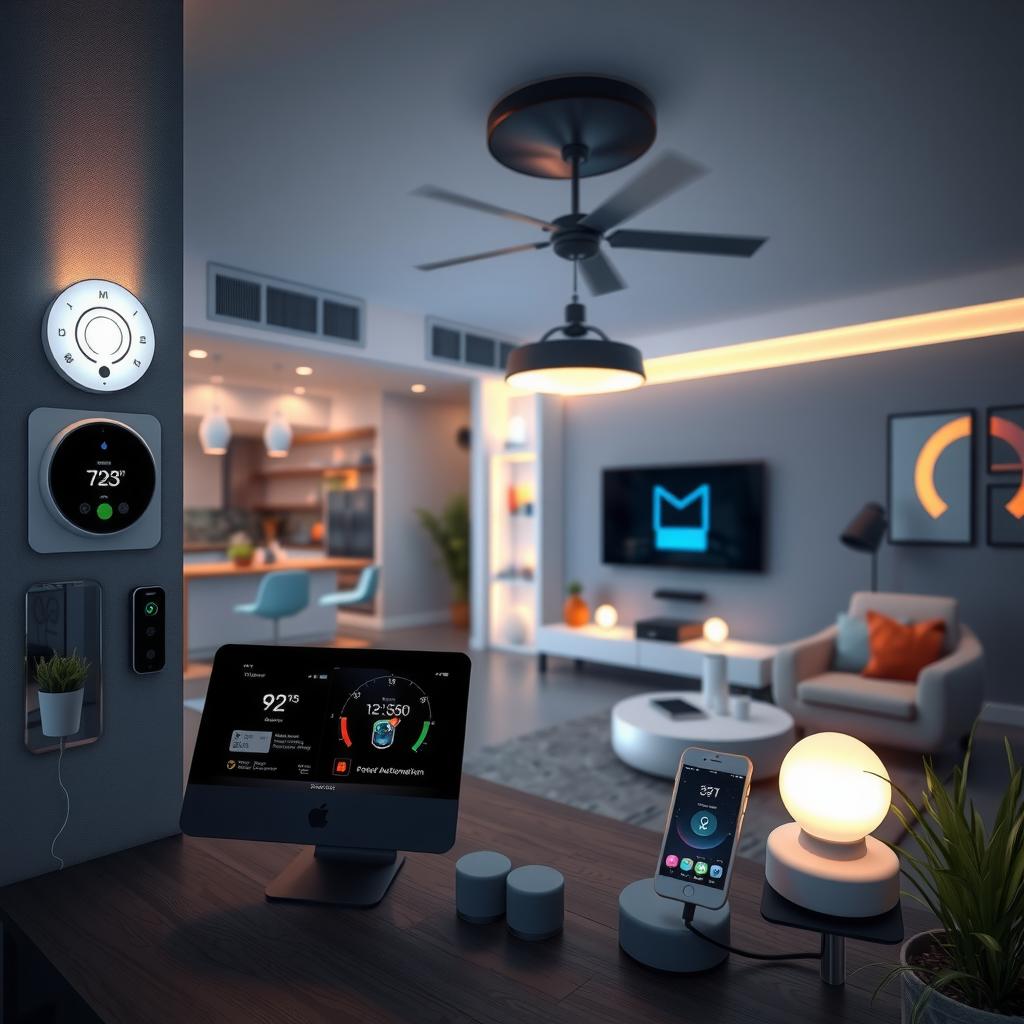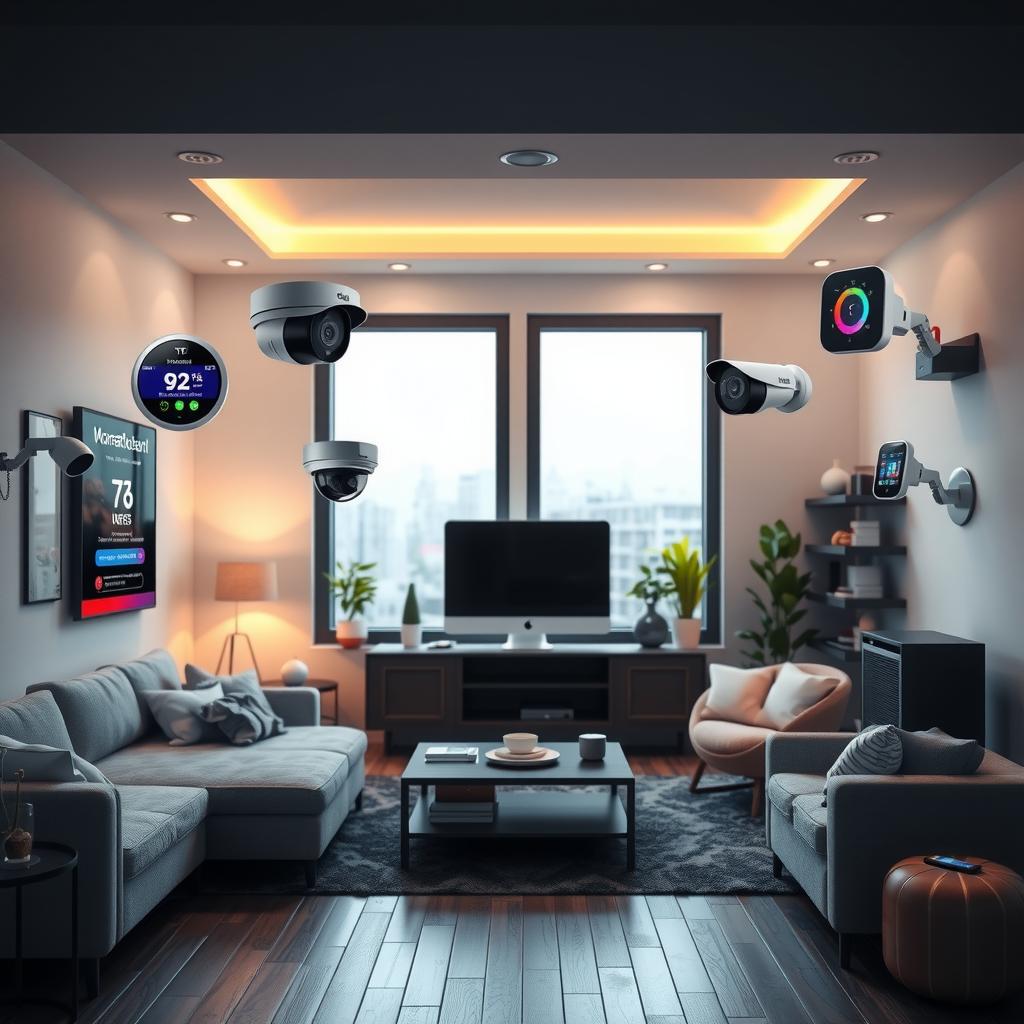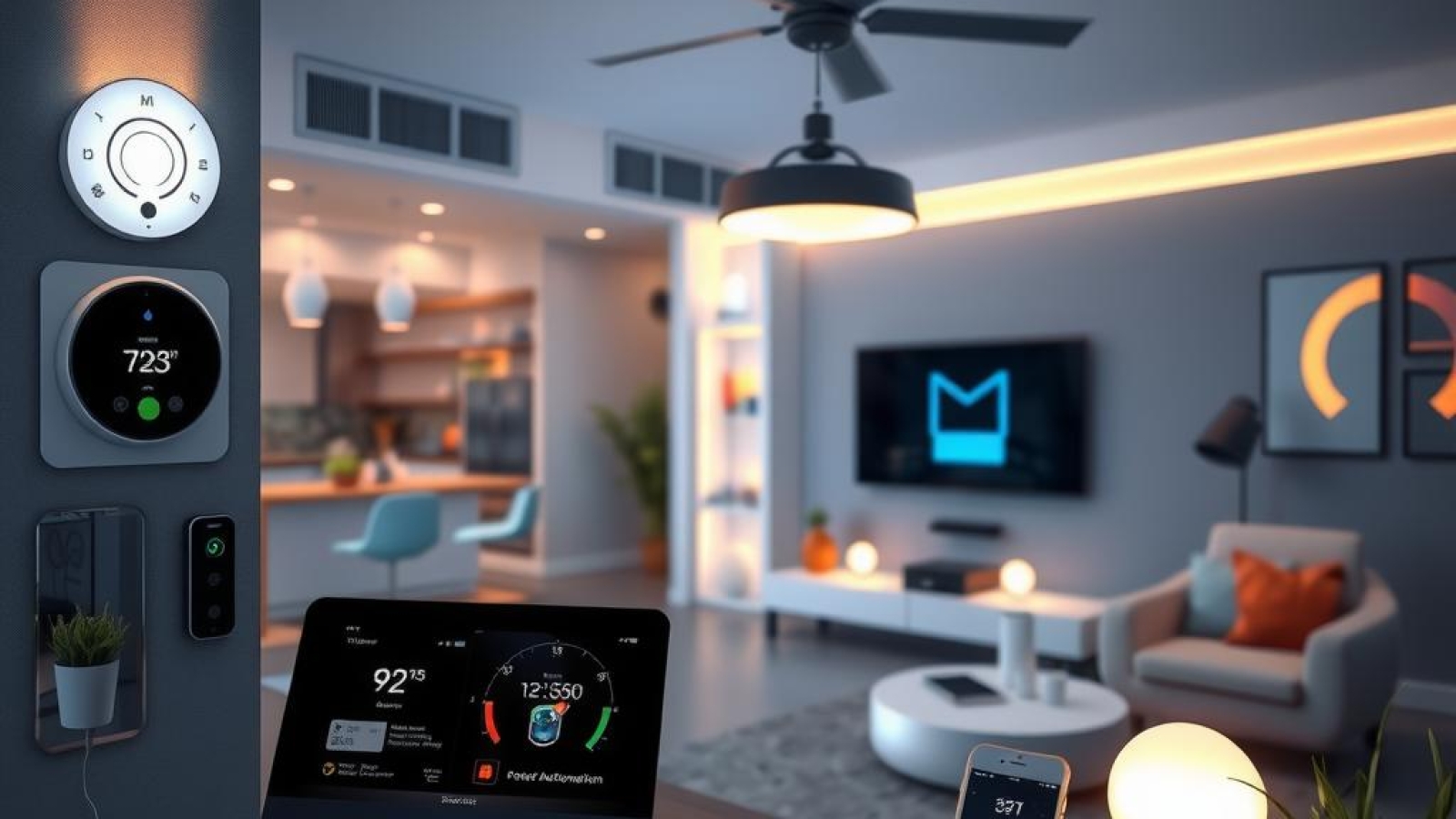In an era where home automation systems are becoming as commonplace as traditional appliances, the allure of convenience often overshadows a more pressing concern: security. With the rise of interconnected devices—from smart thermostats to sophisticated home surveillance systems—the risk of cyber threats lurks in every corner of a digitally enhanced living space. This growing reliance on technology brings to light an alarming reality; many homeowners remain unaware that their smart home security setups could be vulnerable to malicious attacks. As these devices communicate over wireless networks, they present abundant opportunities for hackers and other cybercriminals who seek unauthorized access.
The core value of understanding how to protect these technologies cannot be overstated. A secure home automation network is not just about safeguarding personal information; it’s essential for preserving data privacy and ensuring digital safety within one’s own sanctuary. Without proper measures in place, sensitive data can easily fall into the wrong hands, leading to potential identity theft or property crimes that leverage compromised cameras or alarms.
Fortunately, there are effective strategies available that can help mitigate these risks and bolster network security. By implementing robust IoT protection practices—such as regularly updating device firmware and utilizing strong passwords—homeowners can significantly enhance their defense against emerging cyber threats. The integration of advanced security protocols not only protects individual devices but also fortifies the entire ecosystem connected through a single hub.
This article will delve into practical steps for securing your home automation network against potential vulnerabilities while exploring innovative solutions designed specifically for enhancing wireless network safety. Readers will discover actionable insights aimed at creating a more resilient smart home environment tailored to withstand today’s evolving landscape of cyber risks. Understanding these principles is crucial, especially when considering how much we rely on technology in our daily lives—a reality that makes it imperative for every homeowner to take proactive measures toward achieving peace of mind amidst increasing digital dangers.

Key Points:
-
Implement Strong Passwords: Utilizing complex and unique passwords for each device significantly enhances overall network security. This step reduces the likelihood of unauthorized access, thereby fortifying IoT protection.
-
Regular Software Updates: Keeping all smart devices updated is crucial in defending against potential cyber threats. Manufacturers often release patches that address vulnerabilities; timely updates ensure that homes remain equipped with the latest protections for digital safety.
-
Utilize Firewalls Specifically Designed for Smart Homes: Installing dedicated firewalls can provide an additional layer of defense, enhancing overall smart home security. These solutions help monitor incoming and outgoing traffic, safeguarding sensitive information related to personal data privacy.

The Evolution of Daily Living
Understanding the Shift Towards Smart Homes
The landscape of daily life has undergone a significant transformation with the rise of home automation. As technology becomes increasingly integrated into everyday routines, households are evolving into interconnected environments known as smart homes. This shift is not merely about convenience; it encompasses a broader spectrum that includes enhanced security measures and improved overall quality of life. With devices connected through the Internet of Things (IoT), individuals can control aspects such as lighting, heating, and even security systems remotely via smartphones or voice-activated assistants. This seamless integration allows for increased efficiency in energy consumption and contributes to peace of mind by enabling homeowners to monitor their properties at any time from anywhere.
However, alongside these advancements come new challenges related to cyber threats and vulnerabilities inherent in networked systems. The proliferation of smart home devices raises concerns regarding user data privacy and protection against unauthorized access. Many consumers may not fully understand the implications associated with connecting their personal information to various platforms that support smart home security features like cameras or alarm systems. Hence, maintaining robust network security is paramount for anyone looking to embrace this modern lifestyle without compromising their safety or privacy.
Navigating Security Concerns
Addressing Risks in an Automated Environment
As more households adopt smart technologies, ensuring digital safety becomes crucial amid increasing awareness surrounding potential risks involved in home automation systems. The interconnected nature of these devices means that if one component experiences a breach due to inadequate protection measures—such as weak passwords or outdated firmware—the entire network could become susceptible to attacks aimed at exploiting vulnerabilities across multiple entry points within the system. Users must prioritize strategies focused on enhancing wireless network safety, which include regularly updating software and employing strong authentication protocols.
Moreover, manufacturers play an essential role in fortifying consumer trust by providing comprehensive guidelines on how best users can protect themselves while maximizing their experience with automated solutions offered by various products available today without explicitly naming them here. Consumers should look for those who emphasize transparency around data practices concerning customer information collection processes during installation periods along with ongoing device updates addressing identified weaknesses over time—this aspect directly correlates with broader conversations about data privacy within our increasingly digitized lives.
In summary, embracing home automation offers unprecedented advantages but comes hand-in-hand with responsibilities toward understanding associated risks related primarily through cyber threats impacting both individual users’ experiences alongside collective societal expectations around safeguarding shared resources against misuse stemming from compromised technological infrastructures provided throughout contemporary living environments characterized largely by interconnectivity driven predominantly via IoT frameworks assisting families everywhere globally adapt better lifestyles moving forward despite impending challenges posed continuously by ever-evolving malicious entities lurking online waiting opportunistically behind screens seeking ways infiltrate unsuspecting victims’ homes digitally when they least expect it!
Understanding Cyber Threats in Smart Homes
An Examination of Risks Posed by Interconnected Devices
As the popularity of smart homes continues to rise, so does the need for a thorough understanding of potential cyber threats associated with interconnected devices within these environments. The integration of multiple devices—ranging from smart thermostats and security cameras to voice-activated assistants—creates an intricate Internet of Things (IoT) ecosystem that can significantly enhance convenience but simultaneously exposes users to various vulnerabilities. A single compromised device can serve as an entry point for cybercriminals, thus jeopardizing not only digital safety but also personal data privacy.
In a typical smart home setup, various gadgets are connected through wireless networks, which often lack robust security measures. Many homeowners may underestimate the importance of implementing stringent network security protocols. For instance, default passwords on IoT devices are frequently overlooked or inadequately changed, making them easy targets for hackers seeking unauthorized access. Once inside a network, attackers can manipulate systems or siphon off sensitive information stored on connected devices. This highlights why it is essential for consumers to prioritize smart home security features during their purchasing decisions.
Moreover, the sheer volume and variety of interconnected devices amplify risks associated with poor data privacy practices. Each device collects data that could be exploited if adequate protections are not in place; this includes everything from daily routines and preferences to financial information tied to online shopping habits integrated into smart appliances. Consequently, individuals must remain vigilant about how they manage their IoT ecosystems while ensuring that they utilize encryption methods and two-factor authentication wherever possible.
Another critical aspect involves recognizing that many smart home products require constant internet connectivity for optimal functioning—this continuous connection increases exposure points susceptible to attacks from malicious actors who exploit software vulnerabilities or outdated firmware versions left unaddressed by manufacturers. Therefore, regular updates should become part of any homeowner’s maintenance routine—a proactive approach toward bolstering network security against evolving cyber threats.
Ultimately, fostering awareness about these risks is paramount as individuals navigate this increasingly complex landscape filled with conveniences offered by modern technology coupled with its inherent dangers; understanding how each component interacts within the broader framework allows users more control over their digital domains while significantly enhancing overall safety measures against potential breaches in cybersecurity.
Enhancing Your Smart Home Security
Practical Strategies for a Safer Digital Environment
In the age of home automation, ensuring robust network security is paramount to protect against increasing cyber threats. As homes become more interconnected through various devices, the potential vulnerabilities that can be exploited by malicious entities multiply, making it essential for homeowners to adopt effective security strategies. One fundamental aspect of this protection is strong password management; users should implement unique and complex passwords across all devices and accounts associated with their smart home ecosystem. Utilizing tools such as password managers can facilitate this process, helping individuals maintain distinct credentials without overwhelming memorization.
Furthermore, embracing secure protocols plays a significant role in fortifying smart home security. It’s advisable to utilize only encrypted connections (like WPA3 for Wi-Fi) when setting up wireless networks, which significantly reduces the risk of unauthorized access to sensitive information transmitted over these channels. For instance, implementing Virtual Private Networks (VPNs) can add an additional layer of privacy when accessing IoT devices remotely. In addition to software measures, specialized hardware solutions like firewalls specifically designed for residential use are becoming increasingly popular; they serve as protective barriers against unwanted intrusions while offering customizable options tailored to individual network needs.
Protecting Your Home Network from Intruders
Ensuring Data Privacy Through Strategic Measures
As digital safety becomes indispensable within today’s households filled with Internet-of-Things (IoT) devices, focusing on data privacy and wireless network safety cannot be overstated. Each smart device presents a potential entry point for cybercriminals seeking personal data or control over home systems. Therefore, regular firmware updates should not only be considered good practice but mandatory; manufacturers frequently release patches addressing known vulnerabilities that could expose users if left unaddressed. Additionally, disabling features such as Universal Plug and Play (UPnP), which can often automatically connect new devices without adequate authentication checks—can mitigate risks considerably.
Moreover, segmenting your home network into separate zones allows better control over connected gadgets’ accessibility while minimizing exposure between them—a strategy particularly useful in larger homes with multiple smart appliances operating simultaneously. This approach enables owners to isolate less secure or outdated technology from their primary networks where critical transactions might take place regularly—enhancing overall system resilience against attacks aimed at compromising personal information or causing disruptions in home automation functionalities.
By comprehensively applying these practical tips—including diligent password management practices along with employing secure protocols and specialized hardware remedies—homeowners will significantly bolster their defenses against evolving cybersecurity threats targeting modern residences equipped with advanced technologies today.
Frequently Asked Questions:
Q: How can I improve the security of my home automation devices?
A: To enhance the smart home security of your devices, start by implementing strong and unique passwords for each device. Regularly update firmware to patch any vulnerabilities and consider using a dedicated wireless network safety system specifically designed for IoT protection. Additionally, setting up a guest network can help isolate smart devices from other personal electronics.
Q: What are some common cyber threats that target smart homes?
A: Common cyber threats targeting smart homes include unauthorized access through weak passwords, malware attacks on connected devices, and phishing attempts aimed at obtaining sensitive information. Keeping abreast of these risks is essential for maintaining digital safety within interconnected networks.
Q: Is it necessary to invest in specialized hardware for protecting my IoT ecosystem?
A: While not mandatory, investing in specialized hardware such as firewalls tailored to enhance network security can significantly bolster defenses against potential breaches. These tools provide an additional layer of protection, ensuring that your data privacy is prioritized while navigating the landscape of modern technology advancements.

Add a Comment